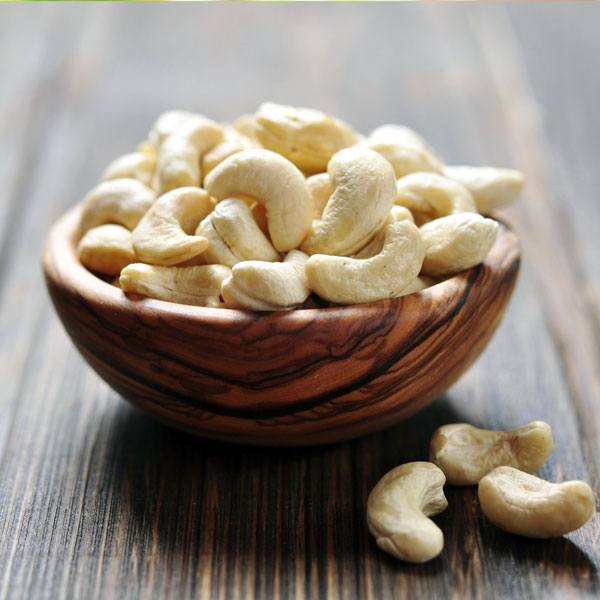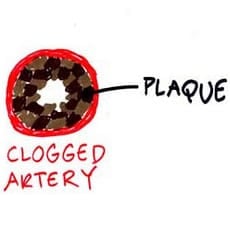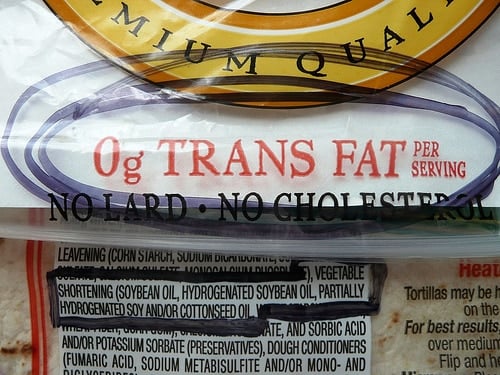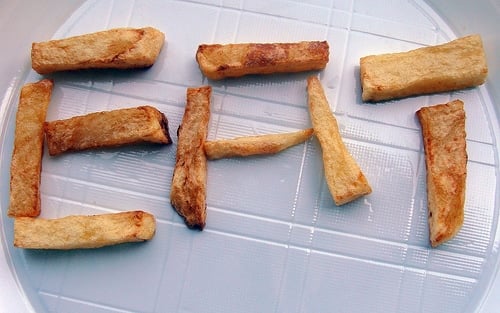The Cooking Oil Comparison Chart
Feb 13, 2012, Updated Jun 28, 2020

You already know that Extra Virgin Olive Oil is good for you. But what do you choose when it’s time to branch out and try something new? There are a lot of cooking oils out there, and many have misleading health claims on the label. It can be a bit overwhelming when you walk down the oil aisle in the store.
Some oils are very healthful, others not so much — and for different reasons. How do you know what’s really important when choosing a cooking oil? And how do you keep track of them all?
Why, with The Cooking Oil Comparison Chart, of course!
I’ve teamed up with Andy Bellatti, MS, RD, to help answer these questions with this chart. (If you don’t already follow Andy, you’re missing out.) We’ve created a one-page, printable PDF that you can take with you to the grocery story (or stick up on your fridge), that will help guide you through the labyrinth of oils.
We focused on two main factors, healthfulness and temperature-sensitivity, since some oils lose their health benefits when heated. Using a grid that makes it easy to see where each oil falls on the spectrum, you’ll be able to tell at a glance which oils to use for your salad, and which to use for your next stir-fry — and which oils to avoid altogether. We’ve also included some secondary details about each oil, along with some important pitfalls to watch out for.
Andy has written a post on his blog explaining the science behind our oil comparisons, so you’ll know why each oil is where it is on the chart. So click on over to Andy’s post to get the nitty-gritty, and then come back here and get the PDF.
The Cooking Oil Comparison Chart
792kb PDF, Last updated June 20, 2017
—
If you’d like to share this chart on your own website or blog, please be respectful (and law-abiding) and share it simply by linking directly to this post. Please do not link directly to the PDF or copy the entire chart to your own site. You may use the image at the top of this post on your own page, if you like. Thanks!
—
PS – Huge thanks to Andy for jumping on board when I proposed this project to him. I had a ton of fun collaborating with him, and appreciate his enthusiasm and expertise!
—
You may also like my other printables:
The Healthy Breakfast Flowchart
The Smoothie Flowchart
A Guide to the My Plate Icon
How to Read the Nutrition Facts Panel





















Curious if you feel the saturated fats in grass-fed(pastured)beef are unhealthy for you? I noticed you put “bad” in quotes so I’m curious what you mean by that?
Hi–I love your chart, but I continue to have a problem finding oils that are healthy and nut free, as we have an allergy in our house. Does anyone know of better-for-you-oils that are processed in a facility that doesn’t use nuts? (I’ve heard that oils are so processed that no proteins are left, but I’m not willing to take that chance).
Great poster crammed with useful information!
Surprised there’s no mention of rice bran oil, which is used in Japan and China for stir- and deep-frying. it has a very high smoke point (490F/250C), second only to avocado oil, and what looks like a good balance of monounsaturates and polyunsaturates.
It’s been available here in South Africa for about two years now, and has been picked up by quite a few chefs and foodies as the best thing you can put in a frying pan. It’s a light, clear oil that also makes great mayo.
Anyone know anything more? I’d really like to hear your experiences.
That’s nice: I showed this fine chart to a friend (here in Holland) who is careful about what oil she uses, and who favours the Japanese kitchen, and she immediately said: ‘Where’s the rice oil?’
I think that the (European) pumpkin seed oil is getting misplaced in this chart as it clearly has several positive and opposite claims of the omega 6 “bad for your prostate” claims. http://en.wikipedia.org/wiki/Pumpkin_seeds
This is a wonderful chart that hits on another kitchen conundrum I have been thinking about lately! Thank you! I printed it out right away. I also wanted to share the most interesting and surprising thing I think I learned from the chart — the negatives of omega 6 in palm oil as well as the negative environmental effects of palm plantations in Southeast Asia. Learning about this was most surprising because my husband and I often discuss the palm plantation he and his family are currently growing in Ghana, his native country. He exclaims to me often about how palm is the most sustainable and culturally revered tree in Ghana because every single part of it has a use, from branches, to fruit, to kernel, to sap. In addition, during early years prior maturation, the soil of palm plantations is particularly conducive to interplanting of other local staples like… Read more »
iM wONDERING WHY OLIVE OIL NEEDS TO BE BAUGHT IN TIN CANS RATHER THAN IN GLASS. DOES IT HAVE SOMETHING TO DO WITH THE LIGHT AND OVER TIME THE BREAKDOWN OF THE OIL? ALSO, WHAT ABOUT OLIVE OIL IN PLASTIC?
Yes, omega-6 linoleic acid and omega-3 linolenic acid oxidize and become biologically dead with prolonged exposure to light, heat and air. From Ed & Patricia Kane PhD.’s Bodybio Bulletin article “4:1 Oil —The Right Stuff” by Edward Kane: http://goo.gl/wIBax “Seeds should be cold pressed under a blanket of nitrogen (nitrogen protects against oxygen damage), lower pressure equates to lower heat and less oil damage. Additionally, the use of dark or opaque bottles is necessary to protect the oils from light, since ***light is 1000 times more deleterious to the sensitive oils than exposure to air.*** They should also be kept cold (refrigerated) all along the process, much like the milk industry, immediately from the cow, to the homogenizing, bottling, trucking, and ?nally to the food store and into our homes to be stored in our refrigerators. We should treat our oils with affection; they are the beginning of life —… Read more »
Also see “The Scientific Calculation of the Optimum PEO Ratio, Parent Essential Oils: Omega-6/3, Defined” here: http://goo.gl/gyQLw
Got it to print now using the print icon at the bottom of the chart. Thanks for this great chart. I’m linking to it from my blog.
Hi Maggie – glad you got it to print! (And thanks in advance for sharing it on your blog. Also, while we’re at it — please link to the post and not directly to the PDF.) 🙂
Love the chart and the notes, but I can’t get it to print out for me. Is it because I’m on Firefox?
This is a wonderful chart! Thank you, I will be sharing with my patients!
I have found the chart on this post extremely valuable: http://www.gofrolic.org/gofrolic/food_blog/Entries/2008/12/28_Cooking_Oil_101.html
Some praise for saturated fats and recommendation to cook with ghee and coconut oil rather than olive oil: http://www.pccnaturalmarkets.com/sc/0602/sc0602-saturatedfats.html
And finally there is some amazing scientific evidence on this science blog: http://wholehealthsource.blogspot.com/2009/05/coronary-heart-disease-epidemic_19.html supporting the consumption of animal fats. If you are an evidence based person (I tend to do what makes sense to me and not sweat the details), that blog is the best place to start that I can think of. There is a ton of information on the Weston Price site but it’s not based on sound scientific footing like Stephen’s blog is.